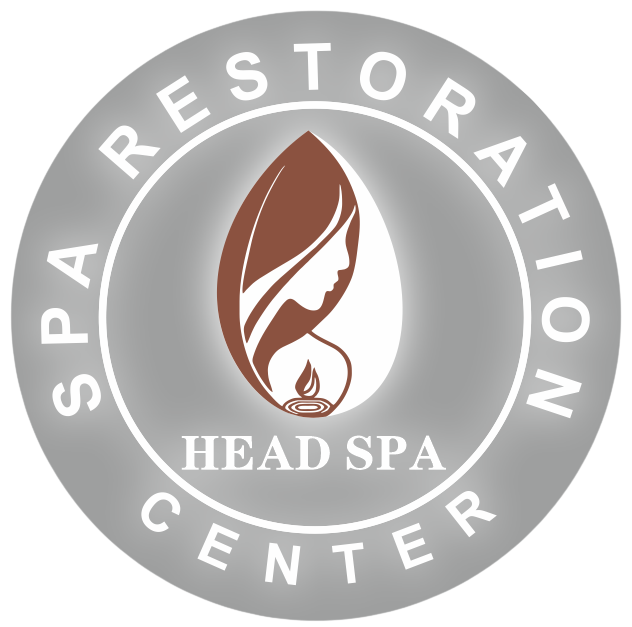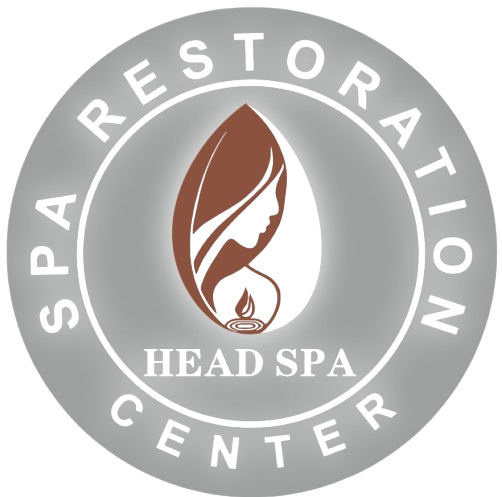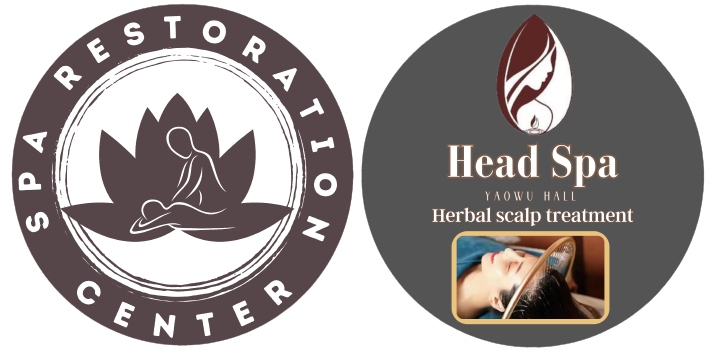
Restorative Massage And Deep Tissue Massage Difference
Whenever people go to the Spa Center, most of the time, they mix it up with restorative massage and deep massage. They might think that deep tissue massage is the advanced version of restorative massage.
It has the word “deep”, so it is probably the better version of deep tissue massage. They suddenly realize this is not the desired massage when they get a deep massage. After that, most cases started to conflict with the spa center.
Restorative and deep tissue massage are not the same but have different features. Restoration massage makes your body more relaxed after getting a massage. But the deep tissue massage? This massage works on the body’s targeted points and gives a massage so that the body’s points can quickly heal.
So, Restorative massage is different from what you think. That is the fundamental difference between Restoration massage and deep tissue massage.
This blog will give you details about restoration and deep tissue massage. So, let’s dive in!
Types Of Restoration Massage And Deep Tissue Massage
Before going deep of the topic of restoration massage and deep tissue massage, it is very important to know about their types:
Here’s a more natural paraphrasing of the types of restorative massage and deep tissue massage:
Restorative Massage Techniques
Swedish Massage
The classic Swedish massage is a gentle yet effective way to promote overall relaxation and well-being. With long, soothing strokes, kneading motions, and friction techniques, it helps alleviate muscle tension, improve circulation, and lull the body into a state of deep rest and rejuvenation.
Hot Stone Massage
This luxurious massage incorporates the therapeutic warmth of heated stones strategically placed on the body. As the smooth stones release their soothing heat, tight muscles begin to unwind, setting the stage for the massage therapist’s techniques to further melt away stress and tension.
Aromatherapy Massage
Engage your senses with the calming power of essential oils during an aromatherapy massage. The carefully selected aromas help quiet the mind, while the skilled massage strokes soothe the body, creating a multi-sensory experience that leaves you feeling deeply restored.
Reflexology
By applying precise pressure to specific points on the feet, reflexology promotes a profound sense of relaxation and overall balance. This ancient practice is believed to help restore harmony and promote natural healing processes throughout the body.
Deep Tissue Massage Techniques
Myofascial Release
This targeted technique focuses on releasing the tension and adhesions that can form in the fascia, the connective tissue that surrounds and supports our muscles and organs. Through sustained pressure and gentle stretching, myofascial release helps improve mobility, reduce pain, and restore freedom of movement.
Trigger Point Therapy
Trigger points are those pesky areas of hypersensitive muscle fibers that can lead to referred pain elsewhere in the body. Trigger point therapy applies direct, focused pressure to these points, helping release muscle tension and alleviate the associated discomfort.
Sports Massage
Tailored for athletes and active individuals, sports massage uses deeper pressure and specific techniques to prevent injuries, reduce muscle soreness, and improve recovery time. It can be performed before or after physical activity to support optimal performance and healing.
Prenatal Massage
A specialized form of deep tissue massage, prenatal massage is designed to address the unique needs of expectant mothers. With gentle but effective techniques, it helps alleviate discomfort, reduce stress, and promote overall well-being during this transformative journey.

Major Differences of Restorative Massage and Deep Tissue Massage
Restorative Massage
focuses on relaxation and rejuvenation. Techniques such as Swedish massage, hot stone therapy, and aromatherapy are commonly used. These methods involve gentle, flowing strokes designed to improve circulation, reduce stress, and promote a sense of overall well-being. Ideal for those looking to unwind and de-stress, restorative massage helps enhance mental clarity and emotional balance, making it perfect for a tranquil escape from daily life.
Deep Tissue Massage
is tailored for those dealing with chronic muscle tension and pain. This technique targets deeper layers of muscle and connective tissue through slow, deep strokes and firm pressure.
Methods like myofascial release and trigger point therapy are used to break down knots and relieve stiffness. Deep tissue massage is beneficial for individuals seeking relief from persistent pain, improved posture, and greater mobility.
Understanding the major differences between restorative and deep tissue massages helps you choose the right approach to meet your specific health and wellness goals.
The Science Behind Restorative Massage and Deep Tissue Massage
Ever wondered how a massage can melt away stress or ease chronic pain? It’s not just about feeling good at the moment. Both restorative and deep tissue massage offer real scientific benefits, achieved through different approaches.
Restorative Massage
Imagine a massage that chills you out on a cellular level. Restorative massage does just that by stimulating your parasympathetic nervous system, the rest and digest mode. This lowers your cortisol levels, the stress hormone, and tells your body to unwind.
But it doesn’t stop there. Even with gentler pressure, restorative massage can boost blood flow. This delivers fresh oxygen and nutrients to your tissues, helping them function better and get rid of waste products.
Plus, the relaxation response itself can indirectly reduce how much pain you perceive. Think of it as a double whammy for stress and discomfort!
Deep Tissue Massage
Deep tissue massage is like a targeted therapy session for your muscles. It uses firmer pressure to break down those stubborn knots that form after injuries or overuse. By working through these tight spots, deep tissue massage can improve your flexibility and range of motion, making it easier to move freely.
Similar to restorative massage, deep tissue techniques also increase blood flow, bringing healing oxygen and nutrients to troubled areas. There’s even a theory called the pain gate theory at play.
Deep tissue massage might stimulate your body’s own pain-blocking mechanisms by applying pressure to specific areas, essentially shutting the gate on pain signals traveling to your brain.
The Science is Still Evolving
Researchers are still digging deeper into the exact mechanisms of how massage works its magic. It’s likely that both types of massage influence multiple systems in your body, leading to the various benefits you experience.
Choosing Your Massage Path
The best massage for you depends on your needs. If you’re seeking stress relief and overall well-being, restorative massage is a great choice. For chronic pain and muscle tension, deep tissue massage might be the ticket. No matter which path you choose, your body will thank you for the scientific touch!

Benefits Of Restorative Massage and Deep Tissue Massage
Here are the key benefits of restorative massage and deep tissue massage:
Benefits of Restorative Massage
Deep Relaxation and Stress Reduction
The gentle techniques and soothing strokes of restorative massage help calm the mind, lower blood pressure, and reduce levels of the stress hormone cortisol, promoting a profound sense of relaxation.
Improved Sleep Quality
By inducing a state of deep relaxation, restorative massage can help those struggling with insomnia or sleep disturbances find it easier to fall and stay asleep.
Enhanced Emotional Well-being
The calming and nurturing nature of restorative massage can alleviate symptoms of anxiety, depression, and emotional fatigue, improving overall emotional and mental health.
Boosted Immune Function
Relaxation massage has been shown to stimulate the body’s natural immune defenses, helping to ward off illness and support overall health.
Pain Relief
While gentler than deep tissue massage, the soothing strokes of restorative massage can still help alleviate mild to moderate muscle tension and discomfort.
Benefits of Deep Tissue Massage
Targeted Relief from Chronic Muscle Tension
By applying focused pressure to the deeper layers of muscle and connective tissue, deep tissue massage can effectively release areas of chronic tension, knots, and adhesions.
Improved Range of Motion and Flexibility
By breaking down adhesions and releasing muscle tightness, deep tissue massage can improve joint mobility and overall flexibility.
Faster Recovery from Injuries
The targeted techniques used in deep tissue massage can help promote healing and faster recovery from sports injuries, sprains, and other musculoskeletal issues.
Alleviation of Chronic Pain
Deep tissue massage has been shown to be an effective complementary therapy for managing various types of chronic pain, including low back pain, neck pain, and fibromyalgia.
Enhanced Posture and Alignment
By addressing muscle imbalances and relieving tension, deep tissue massage can help improve overall posture and body alignment.
Improved Circulation
The firm pressure applied during deep tissue massage can help improve blood flow and lymphatic drainage, promoting the delivery of oxygen and nutrients to the muscles and tissues.

Will A Deep Tissue Massage Hurt?
Deep tissue massage can be intense, no doubt about it. But feeling straight-up pain? That’s a different story. A little discomfort when releasing those stubborn knots is normal – think of it as a good hurt. Many even find it oddly satisfying.
The key is open communication with your therapist. If the pressure crosses the line from discomfort to outright agony, speak up! They’ll adjust. Some post-massage achiness is common too, like after a tough workout. But it should be temporary.
The goal isn’t to leave you crippled, but to finally release that chronic muscle tension. With the right balance of firm techniques and your feedback, deep tissue massage can provide much-needed relief.
How Fast Will I Get Results With A Deep Tissue Massage?
Deep tissue massages can be a game-changer, but results aren’t instant. Chronic pain might take a few visits to loosen up, while a recent muscle twinge could feel better after just one. It’s all about listening to your body.
Some people feel amazing right away, while others might be a little sore for a few days. That’s normal! Here’s the good news: with regular sessions, you should feel more relaxed right away, with some soreness fading after a few days. By 1-2 weeks, you could be feeling significantly better – less pain, more movement! The key is communication , hydration , and listening to your body.
Wrap Up
Now that you’ve got the inside scoop on restorative and deep tissue massage, you can choose your relaxation adventure! Whether you crave a stress-melting escape or a targeted attack on muscle tension, there’s a perfect massage out there waiting to transform your well-being. So go forth, book your session, and get ready to experience the magic of massage therapy!


